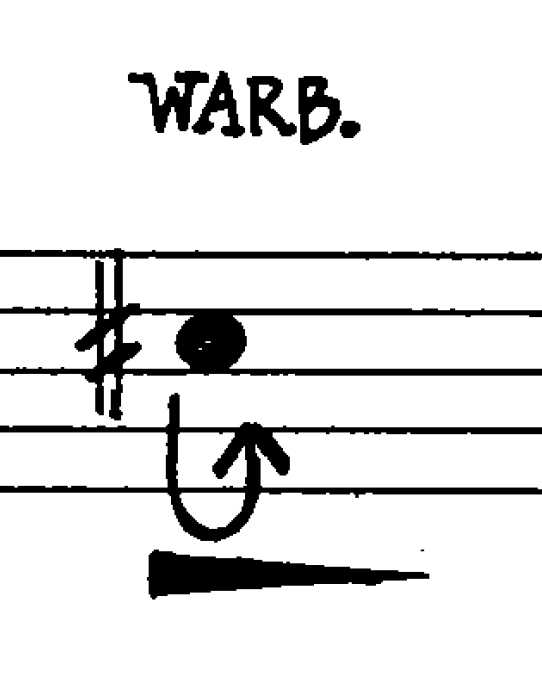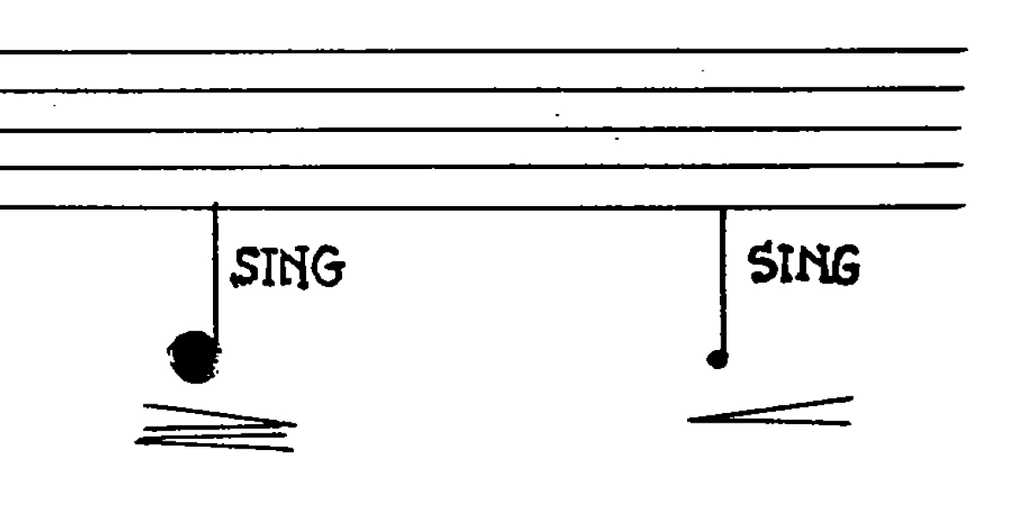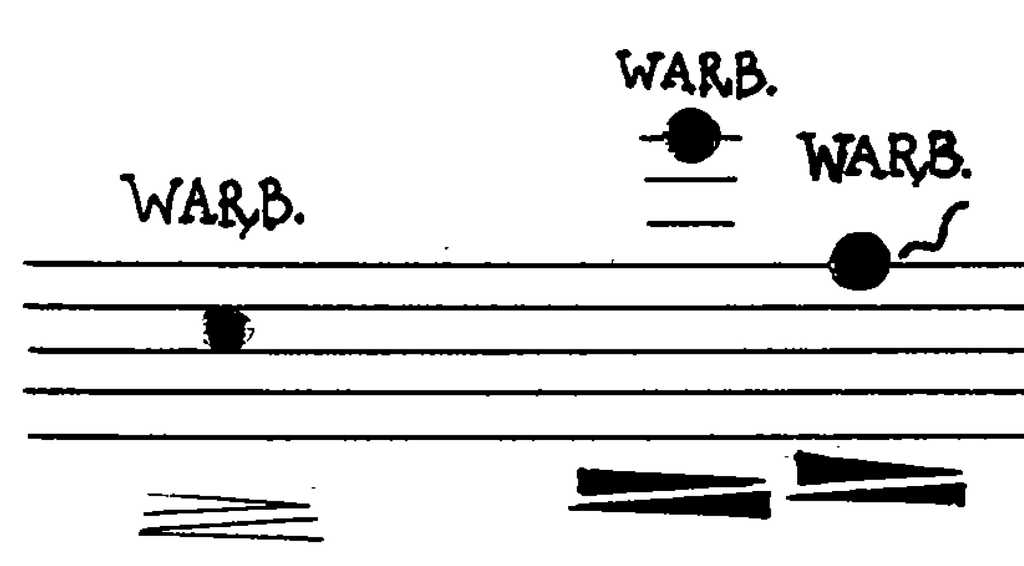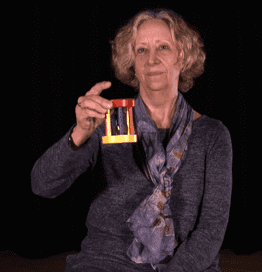Solo for Alto Flute, Flute, and Piccolo
Nancy Ruffer: Performing the Solo for Alto Flute, Flute, and Piccolo
John Cage, Solo for Alto Flute, Flute, and Piccolo (page 140)
Nancy Ruffer
Introduction
The Solo for Flute is one of the parts that is most widely performed as a solo piece, and is one of the wind parts that makes a regular appearance in ensemble performances (as opposed to the Solo for Bassoon and Baryton Saxophone, for instance). It has also been doubled in several performances: the recording in The Barton Workshop plays John Cage (1992) includes two flautists working independently from one another (as opposed to sharing a part), and there are two existing recordings where flautists have overdubbed several parts to create a ‘Solo for Flutes’ (Eberhard Blum in The New York School, 1992; Katrin Zenz in John Cage: Complete Works for Flute 2, 2015).
Sketches from the New York Public Library suggest that Cage consulted carefully with Andrew Lolya, the flautist in the first performance, about the various flute techniques that were possible. Lolya was a freelance flautist, and known as a performer in orchestral, film, and commercial music (he went on to become principal flautist of the New York City Ballet Orchestra in 1961, until his death in 1999). It appears that Lolya was an experienced performer of all three flutes, and had performed alto flute in a performance of Rite of Spring (1913), conducted by Stravinsky.
The instruments
The flute part requires the performer to move between three instruments: the alto flute, concert flute, and piccolo, and as Ruffer pointed out, the alto flute is used the most frequently. Some of the notes that Cage indicates are outside of the usual range of the instrument, such as the C4 on the piccolo. Ruffer discusses them and explains her approach in interview.
Harmonics
The Solo for Flute is the only wind part to include instructions for natural harmonics (they also appear in the string parts). Cage is quite specific in his use of the technique, writing: ‘o accompanying an octave means harmonic, the upper note being the sound to be heard’. Some of the harmonics, (such as the one on C7 on p. 136, line 4) are difficult to produce. (Ruffer discusses her approach to harmonics in interview).
Dynamics
In addition to the use of different sized noteheads, which are indicative of either dynamics or durations of a sound, or both, the majority of sounds have dynamics assigned to them and the Solo for Flute, in common with the bassoon/saxophone and brass parts, is overwhelmingly biased towards crescendos and combinations of dynamics, these latter being a ‘combination of two or more’ crescendos and diminuendos. The player is free to choose the ‘intensity and duration’ of these, and the overriding character, then, is one of change and improvisation with respect to dynamics throughout the Solo.
Articulation
Flutter tongue
Flutter tongue appears in all of the woodwind and brass parts in the Concert and is used for a quarter of the pitched sounds in the flute part. Ruffer demonstrates flutter tongue on all three flutes in interview.
Diaphragm push

In addition to the crescendo and diminuendo signs that appear in all of the Concert parts (either in isolation or in combination), in the Solo for Flute Cage provides ‘inked-in’ crescendo and diminuendo signs, which indicate ‘pushing with the diaphragm at any point or points in the sounding of the tone’. It isn’t entirely clear what kind of effect Cage had in mind. While this is a dynamic marking, its effect is more akin to a form of articulation. Ruffer demonstrates her approach in interview.
Double and triple tonguing are used in all of the woodwind and brass parts apart from the Solo for Clarinet. Each part includes an additional specification, with the wording usually varying slightly from part to part. The Solo for Flute states: ‘When these precede or follow a half-circle, they precede or follow a sustained tone. Speed indications accompany these and trills which are verbally indicated.’ In common with the Solo for Bassoon and Baryton Saxophone there is a bias towards slow, or getting slower, tonguing speeds, with only three notes marked with an ‘accel.’.
Pitch
Sliding tones and microtonal slides
Sliding tones are a common indication in the instrumental parts. Cage writes: ‘Curves following notes are sliding tones (gliss.). They do not refer to time-length but only to direction in pitch’. However, in contrast to some of the other parts (e.g., the clarinet or the trombone), in the flute part sliding tones are always ascending in direction. Since piccolos and (most) altos have covered keys, the glissando is usually played chromatically, using key movements only, with some microtonal adjustment produced by using the embouchure. With an open-holed concert flute, it is possible to slide the fingers off of the holes to create a more fluid, microtonal, transition between tones. (see video: 05:16).
Cage provides the following instructions for microtonal slides: ‘An arrow going up means to slightly sharpen the tone as it continues, arrow going down to slightly flatten the tone as it continues, up and down, microtonal slides’. Ruffer adjusted her embouchure to produce the microtonal slides, apart from in one instance on p. 142 where the slide is indicated on a harmonic, and she used a change in fingering. She explains her approach in interview.
Vibrato
In contrast to the other woodwind parts, Cage instructs the flautist that ‘All tones are to be played vibrato unless accompanied by the indication, “N.V.”’ (this instruction is also used in the trumpet and trombone parts). Non-vibrato, with one exception (p. 144, line 2) is applied to pitched sounds only. All of the natural harmonics are marked non-vibrato, apart from the G5 on p. 140, line 1 (and interestingly, Cage provides a cautionary ‘vib’ here). As Ruffer discusses, vibrato is not conventionally used for harmonics, so this creates a slightly more unstable sound quality.
Other techniques
Cage provides a wide range of suggestions for noises in the Solo for Flute, both pitch-based and noise-based, indicated with ‘Notes above or below a staff and attached to it by a line’:
[A]ny unpredictable interval sounds, accessory whistle, slapping of keys without producing a tone (any percussion instruments, manual and mechanical may be substituted here, a noise element being desired), singing associated with any tone or tones (any tremolo may be substituted here, also any other additional vocalising or throat sounds with or without the flute tones played). These are all free elements which the player may choose.*
Then, at the bottom of the instructions page, as if an afterthought:
*Also the playing of head-joint alone, in the doing of which the player may make any sounds, continued or intermittent, constant in pitch or sliding.
These sounds are addressed individually below.
‘any unpredictable interval sounds’
This instruction appears in both the flute and trombone parts (although the trombone part omits the word ‘unpredictable’) and the plural ‘sounds’ seems to suggest it could be interpreted as a multiphonic. Cage uses the technique frequently throughout the part. As Ruffer pointed out in interview, the multiphonic could be produced using solely flute sounds, or the player could use his/her voice.
Accessory whistles
The instruction ‘Accessory whistles’ only appears in the flute part, as one of the possibilities for noise sounds. Cage indicates this sound by writing ‘WHISTLE’ above a note. In previous performances Ruffer had produced the sound by pucker whistling, but for the performance in Leeds she chose to use a metal pea whistle.
Key slaps
‘Key slaps’ or as they are more commonly known, key clicks, were first used by Edgar Varèse in Density 21.5 for solo flute (1936/1946), and involve slapping the keys heavily to create a percussive sound. The sound of the key slap is dependent on the resonance of the body of the flute. Cage provides instructions for two types of slap: one is a percussive event in its own right to be used as a noise sound: ‘slapping of keys without producing a tone (any percussion instruments, manual and mechanical may be substituted here, a noise element being desired)’. The second is when the slap is produced in synchrony with the articulation of a tone, or as Cage writes: ‘SLAP means slap keys during attack of tone’. During interview, Ruffer commented that ‘The clearer sound is actually to cover all the holes, or press down all the keys of the instrument [plays] and you’d have the lowest and the loudest’. She was clear to make a distinction between these. For the purely percussive slap, she chose to move her fingers rapidly to create a ‘noise’ consisting of multiple slaps. For the slap with sound, she described ‘popping’ her fingers at the start of the sound. For a detailed technical discussion of key clicks, see Levine and Mitropoulos-Bott (2002a, 26–27; 2002b, 20–21).
Singing and vocalising

The Solo for Flute and the Solo for Clarinet are the only two instruments to have singing instructions. Cage suggests vocal sounds as one of the possibilities for noises: ‘singing associated with any tone or tones (any tremolo may be substituted here, also any other additional vocalising or throat sounds with or without the flute tones played)’. Sometimes the instruction appears above a single note (e.g. p. 136, line 2). At other times the effect is used in combination with other techniques, e.g. p. 135, line 3 where it is indicated along with a diaphragm push and a sliding tone. Ruffer chose to sing away from the instrument. In interview, she described singing the softer notes higher and the louder notes lower.
Warbling

The Solo for Flute is the only instrument to make use of warbling (indicated as ‘WARB.’ in the music). Warbling is a technique employed in Native American flute playing (see Harris, 2016). The flautist Jos Zwaanenberg, who has played the Concert as a member of the Barton Workshop, described the warble sound as ‘like a female opera singer slightly drunk or something! […] So warbling for me, you have to get that intensity. I’m not sure whether the flute is the best instrument to do that. Yet again, you are inspired by that sort of instruction to go for the max, at least I was’. Ruffer suggested that the technique could be performed in two different ways: 1) by moving the tongue inside the mouth while playing to produce a ‘warble’ sound; or 2) by playing with a very fast throat vibrato, which is a more practical solution for the piccolo’s smaller embouchure hole. Almost one half of all pitched sounds make use of either the flutter tongue or warble technique, meaning that these ‘disturbed’ articulations are as normative as more conventional articulations, even before other techniques are considered.
‘Head-joint alone’
Like all of the wind parts, Cage provides instructions for dismantling the instrument. In the flute’s case, he asks the performer to play ‘head-joint alone’ (for the alto and concert flute only). Curiously, the instructions are added to the bottom of the instruction page as a footnote to the instructions about noise sounds (almost as if this was an afterthought that struck him after writing the other instructions): Also the playing of the head-joint alone, in the doing of which the player may make any sounds, continued or intermittent, constant in pitch or sliding’. As Ruffer discusses, the performer could choose to play the head joint open or ‘closed’ (by blocking the end of the cylinder), which creates a lower-pitched sound.
Noises
Other noise / percussion

As mentioned above, Cage suggests that the player could use ‘any percussive instruments, manual and mechanical’ to produce an auxiliary noise. Ruffer chose to use a pea whistle or child’s rattle.
Combining techniques
While isolating each technique in the Solos enables a better understanding of the range and detail of techniques Cage used, the real character of each part is revealed in the ways various ways that these techniques are combined. Often one technique may affect another, make another inaudible, or combine with others to create unpredictable and unstable sounds. Performers must constantly navigate the range of options available to them in these cases and make choices as to what, and how, to prioritise in the execution of each sound. Ruffer demonstrates various combinations of sounds in the flute part in interview.
Acknowledgements
With thanks to Jos Zwaanenberg for discussing his experiences of performing the Concert as a member of the Barton Workshop.
Bibliography
John Cage and Joan Retallack, MUSICAGE (Hanover, NH: Wesleyan University Press, 1996)
Craig Harris, Heartbeat, Warble, and the Electric Powwow: American Indian Music (Norman, OK: University of Oklahoma Press, 2016)
Carin Levine and Christina Mitropoulos-Bott, The Techniques of Flute Playing [vol. 1] (Kassel: Bärenreiter, 2002a)
Carin Levine and Christina Mitropoulos-Bott, The Techniques of Flute Playing [vol. 2: piccolo, alto, and bass flute] (Kassel: Bärenreiter, 2002b)
Discography
John Cage: Complete Works for Flute 2. Katrin Zenz, flute (Naxos 8.559774, 2015)
The Barton Workshop Plays John Cage. Barton Workshop; Marianne Schroeder, piano (Etcetera, KTC 3002, 1992)
The New York School. Eberhard Blum, flute (Hat Hut 6101, 1992 [1991])
The works of John Cage are the copyright of Henmar Press Inc., New York and are reproduced by permission of Peters Edition Limited, London. All rights reserved.
